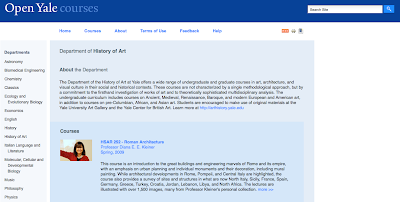We are living in a socio-cultural transformation period. During this period the institutional and traditional models are object of discussion. New technologies are transformation and developing new models that integrate access to knowledge. These technologies of information and communication have motivated a cultural and social change in our communication and the communication channels to share knowledge. Distance learning continues to grow rapidly not only as a cost-effective option; also as a necessary tool in all educational areas and all types of business. My perception includes a rapid growth that will be accompanied with the social webs. The way that we daily interact with the use of Internet has transformed the society in one highly technological. “Online environment has changed significantly” (Siemens, G. 2010).
As a middle school teacher, in my computer science class one of my biggest challenges is to train my student in the correct use of technological tools. By the other side, it is my responsibility as a Instructional Designer to design learning experiences to share principles of technology integration with my coworkers. Other teachers are exploring the use of new technologies without idea on how these could benefit our students and how technology literacy skills can be developed. It is a challenge to design for adults (teachers) and for teenagers (students) on technology use and integration.
There is no doubt that we are living in a technological era. It is very important to become a motivating agent to individuals and organizations. Distance Learning needs to be promoted in different ways. Many organizations have discovered the effectiveness of Distance Learning to provide trainings design to fit their particular needs. In the educational area K-12, we need to start integrating tools that provide students with a new learning alternative. A great example is the expressions of President Obama presenting the use of technology as the tool of the future. We need to convince many educational systems about the use and integration of technology in the educational system. Instructional designers should have the opportunity to develop different educational strategies including distance learning opportunities.
My experience at Walden has been gratifying as a student. Being able to participate in a program that really works. In 2000, I participated in online experiences that were totally different. I also participated as an online teacher for high school students. After these experiences I am a defender of distance education. I have to consider how our society has advanced in technological areas. As a teacher, I integrate the use of distance learning as a tool to help my students. By the other side I try to influence other areas where I collaborate such as church and other educational organizations incorporating distance learning in different aspects of our daily life.
In conclusion, as a student I can positively talk about the benefits of distance learning. As an Instructional Designer I can assure that distance learning is one of the most effective tools of our times. “We need to recognize the global dimension of education” (Siemens, G. 2010). In corporations, industries and educational areas distance learning plays an important role in the development of instruction.
As a middle school teacher, in my computer science class one of my biggest challenges is to train my student in the correct use of technological tools. By the other side, it is my responsibility as a Instructional Designer to design learning experiences to share principles of technology integration with my coworkers. Other teachers are exploring the use of new technologies without idea on how these could benefit our students and how technology literacy skills can be developed. It is a challenge to design for adults (teachers) and for teenagers (students) on technology use and integration.
There is no doubt that we are living in a technological era. It is very important to become a motivating agent to individuals and organizations. Distance Learning needs to be promoted in different ways. Many organizations have discovered the effectiveness of Distance Learning to provide trainings design to fit their particular needs. In the educational area K-12, we need to start integrating tools that provide students with a new learning alternative. A great example is the expressions of President Obama presenting the use of technology as the tool of the future. We need to convince many educational systems about the use and integration of technology in the educational system. Instructional designers should have the opportunity to develop different educational strategies including distance learning opportunities.
My experience at Walden has been gratifying as a student. Being able to participate in a program that really works. In 2000, I participated in online experiences that were totally different. I also participated as an online teacher for high school students. After these experiences I am a defender of distance education. I have to consider how our society has advanced in technological areas. As a teacher, I integrate the use of distance learning as a tool to help my students. By the other side I try to influence other areas where I collaborate such as church and other educational organizations incorporating distance learning in different aspects of our daily life.
In conclusion, as a student I can positively talk about the benefits of distance learning. As an Instructional Designer I can assure that distance learning is one of the most effective tools of our times. “We need to recognize the global dimension of education” (Siemens, G. 2010). In corporations, industries and educational areas distance learning plays an important role in the development of instruction.
References:
Simonson, M., Smaldino, S., Albright, M., & Zvacek, S. (2009). Teaching and learning at a distance: Foundations of distance education (4th ed.) Boston, MA: Pearson.
Video Program: “The Future of Distance Education” 2010, Walden University
Simonson, M., Smaldino, S., Albright, M., & Zvacek, S. (2009). Teaching and learning at a distance: Foundations of distance education (4th ed.) Boston, MA: Pearson.
Video Program: “The Future of Distance Education” 2010, Walden University








